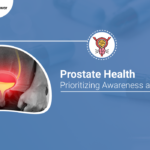Urinary incontinence, or the inability to control one’s bladder, is a widespread and frequently unpleasant problem. The severity ranges from occasionally spilling pee when coughing or sneezing to having a sudden and urgent urge to urinate that prevents you from reaching a toilet in time.
Urinary incontinence is not a natural part of aging, even though it becomes more common as people become older. Consult your doctor if urine incontinence interferes with your everyday activities. Most people can treat urinary incontinence symptoms with simple lifestyle and dietary adjustments or medical therapy.
Table of Contents
Urinary incontinence Meaning
Urinary incontinence refers to the loss of bladder control and can range from minor leaking to a full inability to regulate urination. This illness affects women twice as much as males.
Urologist Dr. Dushyant Panwar can treat you if you have bladder issues such as frequent urination, urine leaks, or an overactive bladder. Make an appointment today.
Types of Urinary incontinence
There are several varieties of incontinence, each with its own set of causes and therapies.
Urinary incontinence can be classified into the following types:
Stress-induced: This type of incontinence is distinguished by a sudden lack of bladder control when you sneeze, laugh, lift heavy objects, cough, or engage in strenuous exercise.
Overflow: You may experience persistent “leaking” or “dripping” urine if your bladder does not empty completely or if you have problems controlling the signals between your bladder and your brain informing you when you need to urinate.
Urge: This type of incontinence is distinguished by sudden, strong desires to urinate, which are followed by involuntary urination. Urge incontinence is also more common at night and might result in waking up several times during the night to urinate.
Functional: The failure to use the restroom on time causes functional incontinence. It is not caused by a urinary tract problem but by another condition, such as arthritis.
Mixed: When one or more of the other types of incontinence are combined, the result is mixed incontinence.
Symptoms of Urinary incontinence
Many people have minor urine leaks from time to time. Others may experience more frequent loss of modest to moderate quantities of pee.
Forms of Urinary Incontinence That Affect Men Only
- Benign prostatic hyperplasia (enlarged prostate) affects around half of all men over the age of 60 and 90% of men over the age of 85; an enlarged prostate can trigger sudden and frequent impulses to urinate.
- Peyronie’s disease is caused by an injury or damage to the penile tissue, resulting in an unnatural curvature.
- Prostate gland inflammation that is painful
Forms of Urinary Incontinence That Affect Women Only
- Pelvic organ prolapse occurs when the bladder, uterus, or rectum enters the vaginal canal and causes an obstruction.
- Physical trauma caused by pregnancy and childbirth might result in stress incontinence or overactive bladder.
- More than half of postmenopausal women suffer from UI.
What causes incontinence while pregnant?
During pregnancy, up to 4 in 10 women experience urine incontinence. 7 As your unborn baby grows throughout pregnancy, he or she exerts pressure on your bladder, urethra, and pelvic floor muscles. This pressure may weaken the pelvic floor muscles over time, resulting in leaks or difficulty passing pee.
Most bladder control issues during pregnancy resolve after childbirth, when the muscles have had time to repair. Talk to your doctor, nurse, or midwife if you’re still having bladder issues six weeks after giving birth.
What causes urine incontinence during childbirth?
Labor and childbirth complications, particularly vaginal birth, can weaken pelvic floor muscles and injure nerves that control the bladder. Most bladder control issues that arise because of labour and delivery resolve after the muscles have had time to repair. Talk to your doctor, nurse, or midwife if you’re still having bladder issues six weeks after giving birth.
What causes menopausal incontinence?
After they stop having periods, some women experience bladder control issues. Researchers believe that reduced estrogen levels after menopause may damage the urethra. The urethra aids in the retention of urine in the bladder until you are ready to urinate.
Furthermore, the bladder and urethra muscles, like all muscles, lose some of their strength as you age. It means that as you become older, you may not be able to hold as much urine.
Alternative and Complementary Therapies
The treatment for urine incontinence differs based on the reason for the problem with bladder control. In most circumstances, a doctor will try the most basic treatment option before resorting to medicine or surgery.
Training for bladder habits This is the initial approach for most incontinence concerns. The goal is to have a regular urine routine with regular peeing intervals. A doctor will typically advise urinating every hour and gradually increasing the intervals between urine over time.
Exercises for the Pelvic Muscles This exercise routine, often known as Kegel exercises, helps strengthen weak pelvic muscles and improve bladder control.
The person contracts the muscles used to hold in pee for 4 to 10 seconds before relaxing the muscles for the same amount of time.
Improvement may require weeks or months of regular pelvic exercise.
Another approach to practicing Kegel exercises is to urinate while interrupting the flow of pee for several seconds.
When to see a doctor
You might feel awkward addressing incontinence with your doctor. However, if incontinence is common or harming your quality of life, you should seek medical attention since urine incontinence can cause:
- Cause you to limit your activities and social connections
- Have a negative impact on your quality of life
- Increase the danger of falls in elderly people as they race to the restroom.
- Indicate the presence of a more significant underlying issue
Complications
Chronic urinary incontinence complications include:
- Skin problems: Constantly damp skin can cause rashes, skin infections, and blisters.
- Urinary tract infections: Incontinence raises the likelihood of recurring urinary tract infections.
- Effects on your personal life: Urinary incontinence can have an impact on your social, professional, and personal connections.
Prevention
Some types of urinary incontinence may be impossible to prevent because they are frequently triggered by something else, such as pregnancy. Instead, you can lower your risk of urinary incontinence by avoiding urinary tract infections, understanding, and avoiding common incontinence triggers, and:
- Keeping a healthy weight
- Performing Kegels and other pelvic floor and bladder muscle-strengthening exercises
- Avoiding foods and beverages that cause urine incontinence, such as caffeine, chocolate, spicy foods, and acidic foods.
- To smoke or not to smoke?
- Keeping frequent doctor’s appointments
- Seeking treatment for urinary tract infections, constipation, and other problems that might cause incontinence
Conclusion
Well, most of you might think urinary incontinence is just an effect of an increase in age but it’s not. Sometimes it may be the reason for some underlying diseases. If you are one of them struggling with these symptoms, kindly consult a urologist.
When it comes to the best urologist nowadays, no one can beat the quality of treatment provided by Dr. Dushyant Panwar. Make an appointment now for your benefit!




